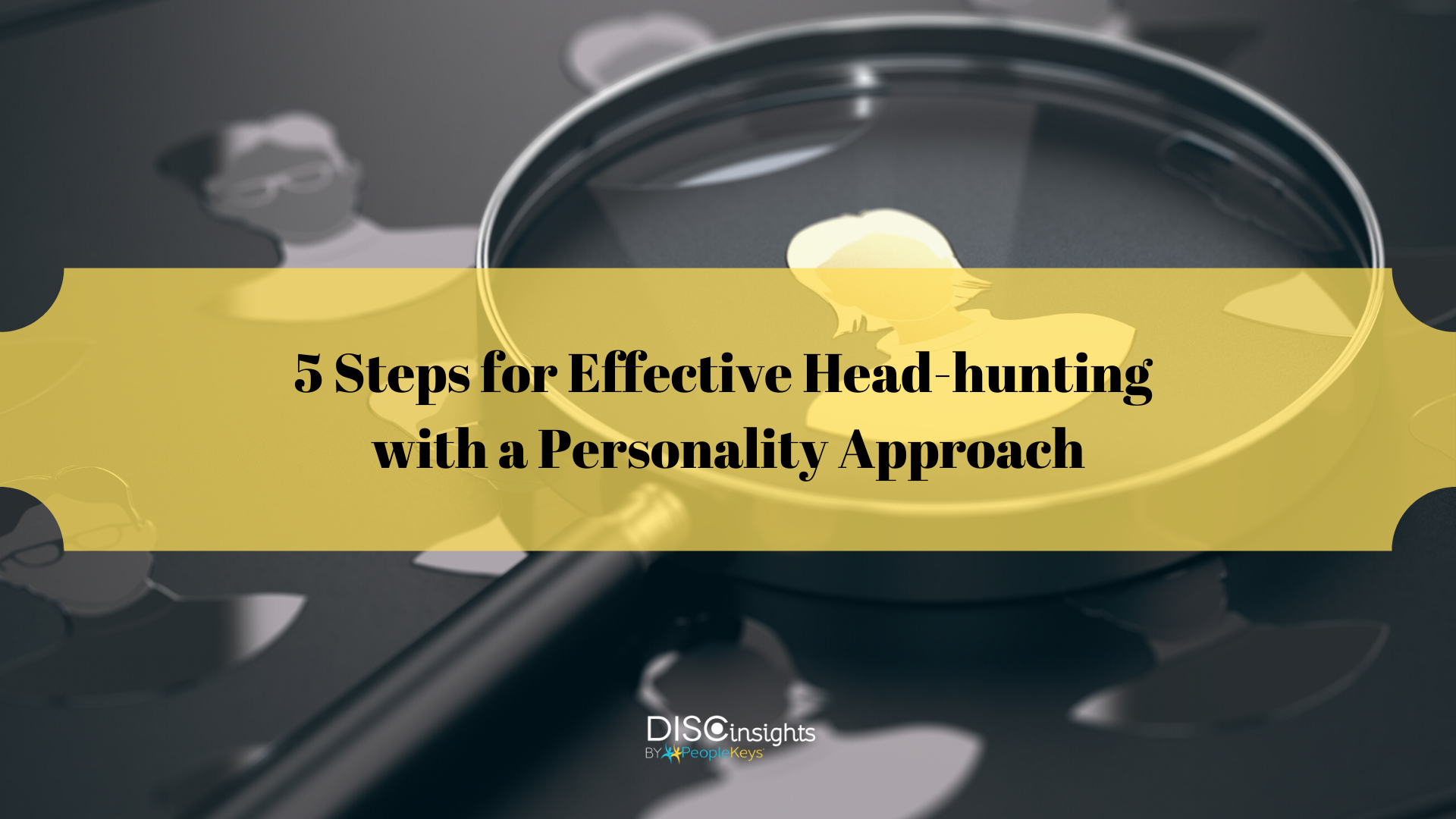- SHOP BY PRODUCT
- DISC TRAINING & CERTIFICATION TOOLS
- DISC RESOURCES
- BLOG
- SHOP BY PRODUCT
- DISC TRAINING & CERTIFICATION TOOLS
- DISC RESOURCES
- BLOG
- ALL ITEMS



Finding your next star employee might be harder than you think no matter of the level of unemployment. Most top talent is already employed elsewhere, so you have to work hard at luring them away. While monetary rewards can be effective, it’s not the only consideration. Use these five steps to find someone whose aspirations fit with the job and your company.
When you understand the four DISC personality styles, you can almost create a “recipe” of your ideal person for the role. The goal is to construct the job description in a way they will see themselves in that role as they read it. Using an occupational benchmark with the determined DISC style range of your perfect employee match will give you a baseline to build upon.
Attract the DISC style talent you are looking to hire by using key phrases and words that describe each style’s strengths in the job description:
Just like a food recipe, you can blend these to fine-tune who you attract.
Think of the candidate search process in two categories of active and passive. Active would be live events, such as conferences, job fairs, and trade shows. Passive would be online job boards, LinkedIn, or Facebook. The “D” and “I” styles will be more likely to show up at live events to meet face to face. Once they approach you, you’ll have a good idea about their style. The “S” and “C” styles may also attend, but they are probably spending more of their time online. You may find “S” candidates through family or friends’ referrals, so put it out there on the social media sites. The “C” is digging through all the job postings on sites like Indeed, and will respond with several questions about the job.
The job description is the introduction to your company, but think about the next step in terms generating a hot lead. This is where your application process can either help or hinder connecting with the right employee. The “S” and “C” styles will be fine with a typical application portal where they fill in blanks and submit. The “D” and “I” candidates will be more appreciative of a direct, personal touch such as a phone call or email. Having them send a resume to you, followed by an initial phone call, will help them tolerate eventually filling out an online application. Simply sending them a link first will turn them off.
At the beginning of your search, you should have generated a list of critical success factors for the job. You can also use the PeopleKeys performance benchmark in conjunction with your list to create a scorecard and set of behavior-based interview questions for the final candidates. What will successful answers look like? Using approaches like the STAR method (Situation, Task, Action, Result) for scoring their answers to behavioral-based questions keeps a consistent measure of each person’s answers. Develop the questions to be in line with the ideal profile you’ve created. You can focus on both strengths and areas of growth. For example, “D” questions might include, “Tell me about a time when your patience was tested and how you handled it” or “Recall a tough decision you had to make quickly and describe how you handled it.”
Having deeper insight into what motivates candidates will contribute to creating a job offer they’ll be happy with. If you’ve had them take the 4D assessment, their Behavioral Attitudes Index (BAI) and Values results will provide details you can use to formulate the actual letter and benefits they will receive. Autonomy is big for the “D,” “I,” and “C” styles, while stability is attractive for the “S” style. Be “bottom-line” with the “Ds,” energetic with “Is,” emphasize teams with “Ss,” and provide details to “Cs.” Beyond those basics, key off of the BAI and Values results to fine-tune an offer. Remember, some people will value loyalty, equality, personal freedom, and/or justice, so align your offer with these core values. Behavioral attitudes results reveal what inspires and motivates people so other than better pay, your next top performer may be internally motivated by opportunities for better inner awareness, more artistic and innovative approaches, ability to have influence and power, or help other people, and lastly but not least – by the chances of acquiring more knowledge and proficiency.
These 5 steps do require some thinking and work, but what’s it worth to find the best fit for your company and the job?

© PeopleKeys. All Rights Reserved
WORKING DAYS/HOURS
Mon - Fri / 8:30AM - 5:00PM EST
